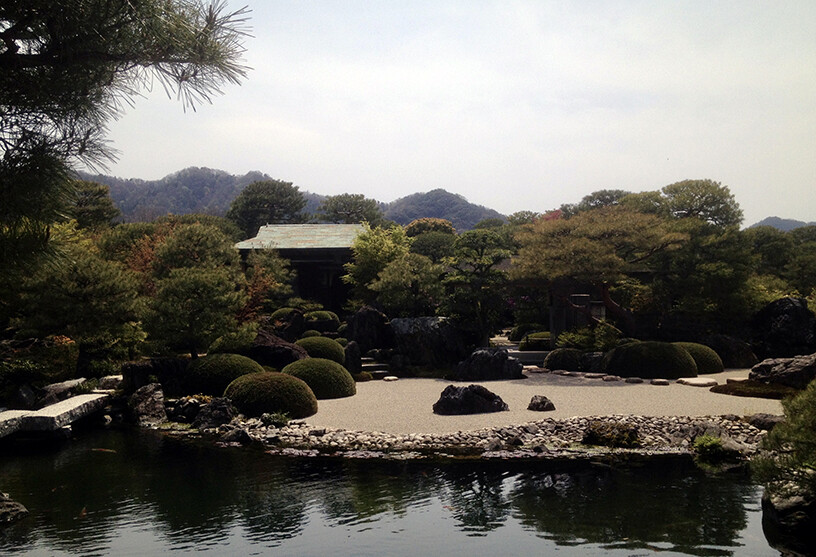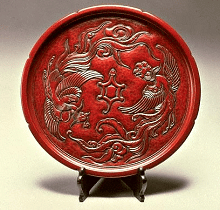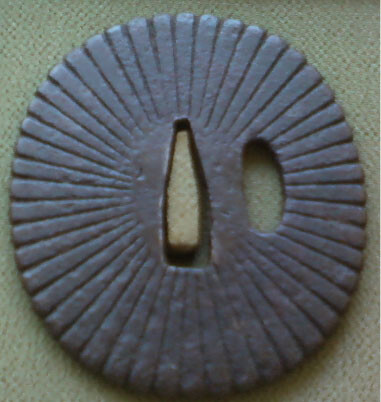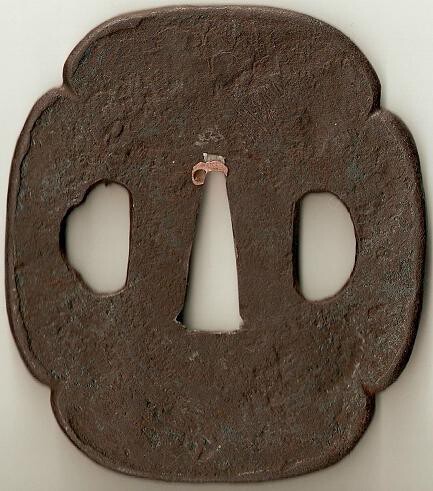-
Posts
2,875 -
Joined
-
Last visited
-
Days Won
3
Everything posted by Soshin
-
I would agree with Christian this tsuba at it's level of quality would warrant a professional touch to help restore it's condition. In my past posts I have discussed cleaning of iron tsuba but these tsuba(s) in question was not at the level of quality or importance as this tsuba appears to be. They also did have anything else wrong with them besides superficial rust on their surface. The problem with the shakudo plug in the kozuka hitsu-ana will require a professional touch and understanding to fix. Yours truly, David S. (Soshin)
-
Rich, thank you so much for replying to this tread. After rereading you entry in your blog about the Umetada school I think you are correct about what shool this tsuba belongs to. I have not seen many Umetada tsuba in hand and have only seen one and that tsuba dated to the mid Edo as it had a confirmed signature on it. As for the issue of Kamakura Bori I would like to offer some more helpful information. The technique know as Kamakura Bori is named after a similar looking wood carving technique used in engravings. So, it has nothing to do with the place "Kamakura" in Sagami Province and also nothing to do with the Kamakura period (1192 - 1333) of Japan. Here is a example of the Kamakura Bori wood carving technique. The Kamakura Bori technique was used in tsuba during the Momoyama and Edo periods. Yours truly, David S. (Soshin)
-
Roy, The carving technique of the waves do look like Kamakura bori from the photos provided. How the flowers are done in negative silhouette and how the sukashi design when the tsuba is flipped are mirror images reminds me of Choshu as well as the seppa-dai and the hitsu ana shape. The overall size and shape of the tsuba makes me think late Edo (i.e. Bakumatsu) period. The mixture of techniques also makes me think late Edo. A good photo of the tsuba mimi or edge would be very helpful. Thank you for sharing photos of your nice tsuba. Yours truly, David S. (Soshin) (08/12/10: Edited to fix a minor grammar error. )
-
I like the tsuba. I would say that the tsuba is likely Bakumatsu Choshu. I interested in what other people think. Yours truly, David S. (Soshin)
-
Thanks again John for providing additional information and a fine example. I think due to the sizable differences is mei and degrees of craftsmanship there were many Kunihiro that made Tosho style tsuba during the late Edo period. Each with a specific signature style and degree of skill. I do find it also interesting that the craftsmen who made my tsuba seems to be the only one that signed Kunihiro using a grass-script calligraphy style. This style is more common on swords but this is the first time I saw a tsuba singed with a grass-script calligraphy style. Yours truly, David S. (Soshin)
-
Hey John, thank you so much for posting the Haynes information for Kunihiro circa late Edo period. Here is a crop image of my tsuba's nakago hitsu-ana area with red arrows highlighting the spaces that once had "copper plugs" (i.e. sekigane). They were removed later at some point before I acquired the tsuba. The sekigane are generally easy to remove if one is determined to remove them. Not sure why David's tsuba doesn't have any signs of copper plugs being used in the nakago hitsu-ana. I also found another website with some information: http://home.earthlink.net/~jggilbert/hoan.htm. Jim's website has a Kunihiro tsuba that is signed "Kunihiro saku" which is different then both of ours on the message board. Cannot see the mei clearly enough to see if the name is stylistically like mine or David's. Also my sekigane were shaped very differently then what Jim's describes as characteristic of Bushu Kunihiro. Yours truly, David S. (Soshin)
-
Dear David, I just wanted to add something to your old post. I also purchased a Kunihiro Tosho style tsuba from Japan recently (i.e. around April of this year). Here are some photographs of tsuba on both sides after I have performed some restoration work on it to remove a fair amount of active rust. The techiques are discussed here on this forum topic http://www.militaria.co.za/nmb/viewtopic.php?f=2&t=8087. Don't know much more about your tsuba or mine other then it then they likely date to the late Edo period. I also do notice that the mei is different between our two tsuba. This might indicate that there was more then one Kunihiro making Tosho style tsuba in kaku-maru gata or naDekaku shape in the late Edo period. I also came across this website http://home.comcast.net/~colhartley/Oriental/ArmsAndArmor.htm from a notice from my local token kai about a recently departed member of the US Nihonto community. Under the section entitled "Tosho Tsuba": http://home.comcast.net/~colhartley/Oriental/ArmsAndArmor.htm#Swordsmith_(Tosho)_Tsuba_ it states that: I know of three different swordsmiths that used the name during the Shinto and Shin Shinto periods. I hope you find any of my additional information helpful. Yours truly, David S. (Soshin)
-
Dear Mark, Take a look at this tsuba that was up for sale on eBay of all places: http://cgi.ebay.com/ws/eBayISAPI.dll?ViewItem&item=280531128598&ssPageName=STRK:MEWAX:IT#ht_2208wt_1135. It has a similar design. The eBay seller has some other really nice tsuba currently for sale on eBay. Hope you find this information helpful. Yours truly, David S. (Soshin)
-
I remember hearing this rule from other collectors which I also heard extended into not cleaning any of the ana surfaces as well. This rule has also made it into the online resources I talked about earlier if I remember correctly. I also remember being told the the degree of oxidation and dust could be used to date the approximate age of the sukashi tsuba much like a nakago of a sword. From a practical point of view I can see Mark's point about rust damaging the fine sukashi designs in body of the tsuba that has never been cleaned. A more balanced complex approach may need to be taken in addressing this specific issue. Yours truly, David S. (Soshin)
-
I can see your point and that was why I was willing to display with photographs of my own method and its results. To try to get other people on the forum to open up. I was also looking for constructive feedback (positive or negative) as well and hopefully a discussion of techniques. One thing that I have also noticed from cleaning this and another tsuba (Bakumatsu Chosu Sukashi tsuba) was the variation in the hardness of the iron (i.e. steel). This might be related to the whole issue of all techniques not always working on all tsuba. The iron of this Tosho tsuba was much harder compared to the other tsuba I also cleaned using the same techniques. This is factoring in that the Tosho tsuba had much more active rust on it then my Chosu tsuba had on it surfaces. Also not counting the inner surfaces of the sukashi which I avoided cleaning on the Chosu tsuba. Yours truly, David S. (Soshin)
-
I wanted to start this topic to discuss iron tsuba restoration and/or preservation. The idea came to me after reading the long and well done discussion about rust on this forum. I have been working on restoring some of the lower value iron tsuba in my collection. Most of my higher end tsuba are already in good condition and not needing of any restoration or preservation work to the best of my knowledge. The tsuba photographs of before and after my work is to help start the discussion. It is of a late Edo Tosho Styled tsuba signed Kunihiro. The tsuba was purchased in Japan and was covered in active rust but lacked any deep pitting or other such damage to the surface of the tsuba. The technique used involved the application of a white cotton towel and small pieces of dried hard bamboo worked over the surface to remove the red colored active rust that would show up on the white cotton towel. I also would clean the surface with a mild soap and water solution as well. These techniques I have develop from mostly talking to collectors in my local area and reading such wonderful websites such as Jim Gilbert's “Tsuba: Art of the Japanese Sword” and Dr. Richard Stein's “Japanese Sword Guide”. I have also read about the use of bone and ivory but have only used small pieces of hard dried bamboo to clean this and other iron tsuba surfaces. The objective with starting such a topic is to create a medium of discussion and learning of different techniques used by collectors to help restore and preserve their fine iron tsuba of their collection for future generations. The topic is not to discuss the artistic merit of such tsuba that people provide as examples of their own or someone else work. Let me know if I can provide any additional information about my example I have provided to help facilitate discussion. Any suggestions would be welcomed as well. Here are basic measurements for the tsuba: Size: 7.0 X 6.45 cm thickness 0.55 cm Yours truly, David S. (Soshin)
-
Kevin the second piece looks like it dates to the Meiji period and is a fine example of a work by professional tosogu artists that were forced into making jewelry and other decorative metal works after the banning of the wearing swords which caused a drop off of the tosogu business. The subsequent abolishment of the samurai and daimyo classes also didn't help the business either. Some other tosogu made during the the late Edo period were also covered into jewelry as well, you first photo is a good example of this as well as Gaijin's menuki. Yours truly, David S. (Soshin)
-
I must agree with John observation about the unworn state of the nakago-hitsu ana and the lack of soft metal inserts called sekigane. My Saotome tsuba that I posted on which I was estimating to be early Edo based upon its measurements (which is very important piece of information for determine approximate age) also lack sekigane but shows considerable more wear and alternations consistent with its use as a hand guard likely mounted on multiple swords. Below on another tsuba I have is an example of the soft metal inserts I am talking about. Yours truly, David S. (Soshin)
-
I justed wanted to reply to this post with some additional information and photographs of the tsuba that I did with my cellphone under indirect outdoor light from a window. As you can see the overall color of the patina (sabi) is dark. The rust that is present is also dark in color as well and not of the active type that comes off from a rub with a cotton rag and that is red in color. In terms of treatment I am really not sure if anything can or should be done as the oxidation that is on the tsuba is very dark in color, hard, and of the inactive (not growing) type. Thanks again for any help provided. Yours truly, David S. (Soshin)
-
I purchased this tsuba a few months ago and after examining it I came to the unlikely conclusion that it might be as old as the early Edo period based upon it thickness, size and presence of a single kozuka-hitsu ana. The kozuka-hitsu ana has a consistent small narrow shaped I have seen in early Edo Saotome school work before. Below are my measurements of the tsuba and some high resolution scans of both sides. The color in the scans are a little off and sabi of the tsuba appears much much darker while the tsuba is in hand under normal lighting conditions. I am still in the process of working on a write up about the tsuba for my own research and to catalog as part of my collection. I had a few different people mostly friends at my local token kai and martial arts dojo examine it. One person said that it looks like it was only fitted to a single sword because it lacked sekigane therefore it was likely a really good late Edo Saotome work. Still other friends told me to post it on the forum to see if anyone on the forum would know more information. The classic Saotome kiku design is in low relief and well executed with a wonderfully shaped mimi. I enjoy just staring at it while handing the tsuba. I would like other knowledgeable and experienced people take a look at and tell me what you think. Thanks again for taking the time to read and download the scans of my tsuba. If anyone requires more information please let me know. Measurements: 6.7 cm wide 7.9 cm high 0.4 cm thickness @ mimi 0.3 cm thickness @ seppa dai Yours truly, David S. (Soshin)
-
I am also interested in this tsuba http://bushiart.com/includes/large.asp?img=TS1720.jpg&refnum=TS1720 on this website and have paid a down payment on it to allow Vitali to hold it for me. I was thinking it was likely made it the late Edo period maybe even cast but with some skill. Not sure if it is in fact cast but the piece is very reasonably priced even if it is a late Edo period piece. I find the design wonderful and just what I am looking for for my collection. I have seen photographs of a Muromachi period Ko-Shoami tsuba using this ji-sukashi stylized design of a Buddhist Dharma wheel called a rinbo in Japanese. About a year or two ago one Ko-Shoami piece in the monthly Token Bijutsu magazine of the NBTHK in their Juyo Toshingu section at the beginning of the magazine. Needless to say a Juyo Tosogu is way out of my current collecting price range. Just wanted to chine in with my experience. Any additional information would be helpful and thank you. Below is the Juyo Tosogu Ko-Shoami piece I was talking about. Yours truly, Daivd S. (Soshin)
-
I noticed the same thing last week when I listed a tsuba on eBay. It stopped me from listing the item international on the eBay UK website. If I remember correctly I think I used the “/Asian Antiques/Japanese/Tsuba” categories to list the tsuba. The reason it gave for not allowing the listing was that it was a "hunting knife" or some such thing. Yours truly, David S. (Soshin)
-
Thank you John, It looks like it is the Kanji for "kotobuki" stamped twice on the front of the tsuba. I would like to thank everyone for taking the time to answer some of my questions. I have another Tempo tsuba with the common kokuin design of the dai and tsuchi Kanji together along with the crosshatching design also displayed in the chart. Yours truly, David S. (Soshin)
-
I obtained this tsuba with a complete matching uchigatana koshirae. I will post the other parts of the koshirae later. The tsuba is displays all of the characters of the Tempo school. The strong tsuchime-ji, sukinokoshi mimi, and kokuin. The iron “bones” tekkotsu are granular and linear on the mimi. One of the more interesting things about the kokuin of this Tempo tsuba is the Kanji character that is used in the kokuin design. I think the character is 幸 which means fortune. Can anyone else identify the Kanji character? This is different then the common characters of dai 大, chi 地, ten 天, or kin 金. Has anyone else ever seen this Kanji in others works done by the Saotome, Tempo, or Heian-jo schools that use the kokuin technique in iron. Thank you for taking the time to answer my question. The tsuba is large measuring 7.20 X 8.20 cm with a 0.3 cm thickness at seppa-dai and 0.4 cm thickness at mimi. Yours truly, David S. (Soshin)
-
Thanks for posting the website. I see a few different tsuba that look nice and that are also generally in my price range. Thanks for posting the link I will added it to my list of tosogu related bookmarks. Yours truly, David S. (Soshin)
-
The flower design is of a Japanese plum blossom (Prunus mume) done in a small silhouette open craving. In Japanese this is called kô sukashi (小透). This technique is very common in late Edo period tsuba. The fuchi looks to have a family crest (ka-mon) on it. I hope you find this information helpful. Yours truly, David S. (Soshin)
-
After reading all of the posts. Just wanted to say that a subscription blog only about Tosogu connoisseurship would be great. Once I have the extra cash I will subscript via Paypal. Yours truly, David S. (Soshin)
-
Generally the practice of writing Buddhist mantras in Roman characters is a fairly recent practice started in the middle to late 20th century with the spread of the religion/philosophy into regions not traditional Buddhist (i.e. Western Europe and America). Having the mantras written with Roman characters greatly helps the western Buddhist not familiar with written Japanese to recite the mantras. Also generally speaking Buddhist mantras that were transliterated into Japanese from Chinese or Sanskrit start with a On (Sanskrit Om) or Namu (Sanskrit Namo). The use of Romanji (writing the Japanese language with Roman letters) was very popular during the Meiji period. The Meiji government even considered changing the official Japanese language to only use Roman letters. This never happen because it quickly became apparent that the Japanese language has too many homophones that can only be distinguished by their Kanji reading. The interesting Namban tsuba in questions looks likely made during the Meiji period and I would consider adding it to my collection if given a chance. Thanks for starting a discussion of such a interesting Namban tsuba. Yours truly, David S. (Soshin)
-
I have never personally used it on tosogu. I do have some iron tsuba in my collection that have been treated with Ibota wax. All with the exception of one was purchased in Japan. The Ibota wax was already applied to the iron tsuba(s) before I acquired them for my collection. I think it was a fairly common practice to appliy a layers of Ibota wax to prevent rusting on iron tosogu such as tsuba. Yours truly, David S. (Soshin)



















